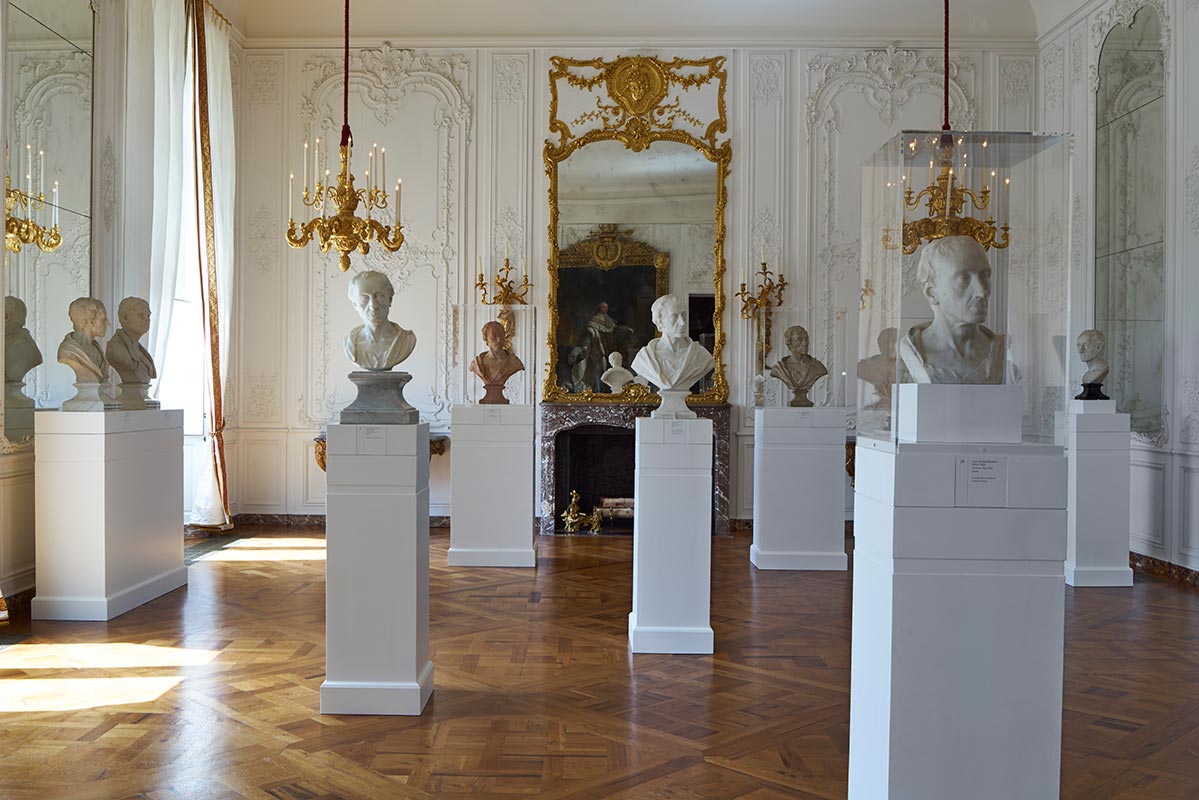Alexander Pope appreciated the power of portraiture. His talents as a writer, critic, poet and classical scholar first brought him to public attention but, as this impressive exhibition at Waddesdon Manor shows, his celebrity status gained a hefty boost from shrewd management of his image.
View of the exhibition ‘Fame and Friendship: Pope, Roubiliac and the Portrait Bust in Eighteenth-Century Britain’ at Waddesdon Manor, The Rothschild Collection (The National Trust). Photo: © Richard Bryant/arcaidimages.com

Voltaire told how ‘the picture of the prime minister hangs over the chimney of his own closet but I have seen that of Mr Pope in twenty noblemen’s houses’. Organised in partnership with the Yale Centre for British Art, this exhibition contains formal and satirical portraits of Pope by artists such as Charles Jervas, Jonathan Richardson the younger and Sir Godfrey Kneller. These are, however, only the prelude to the main event: uniting for the first time the eight versions of Roubiliac’s bust of the poet in bronze, terracotta, plaster and marble. The result is a jewel box of an exhibition that opens up important questions about celebrity, patronage and sculpture in the 18th century.
One of the unexpected pleasures, in a show that focuses on replication, is the sheer variety that greets you in the Roubiliac room. In all the busts, Pope is depicted in the classical tradition – bare-headed with, in most, his shoulders covered with loose swathes of antique drapery. The mirrors that line Waddesdon’s white drawing room allow you to appreciate the busts in the round. This leads to some surprising pleasures, such as the tactile delight of the folds of unformed plaster visible behind the c. 1760 bust from the British Museum. Roubiliac’s genius, however, lies in the extraordinary delicacy of the carving and the sense of life and movement in each portrait. Seeing the busts together makes you acutely aware of the tiny differences that animate them. Minor adjustments in the features and pose seem to evoke a range of moods and emotions, from the stern and statesmanlike to the strikingly vulnerable.
View of the exhibition ‘Fame and Friendship: Pope, Roubiliac and the Portrait Bust in Eighteenth-Century Britain’ at Waddesdon Manor, The Rothschild Collection (The National Trust) Photo © Richard Bryant/arcaidimages.com

This range gives a more human side to the poet, who was a notoriously good hater. In the bust commissioned by William Murray, later 1st Earl of Mansfield, for instance, the naked torso and taut features give an intense, psychological portrait. The inscription – which translates as ‘Friendly only to Virtue and her friends’ – pays tribute to Pope and Murray’s close relationship and shared ideals. The same quotation from Horace was later used by Murray on his bust by Nollekens, which was originally displayed alongside Pope’s bust in the library at Kenwood. Here, the two busts are again reunited for the first time since the 18th century.
 This exhibition offers many such mutually enhancing pairings and pleasing details. While the show is comparatively small, it is possible to spend a considerable amount of time here, not only appreciating the busts and paintings but also exploring the networks of relationships. With objects ranging from the ravishing to the quirky, glittering design and intelligent curation there is much to enjoy at every level.
This exhibition offers many such mutually enhancing pairings and pleasing details. While the show is comparatively small, it is possible to spend a considerable amount of time here, not only appreciating the busts and paintings but also exploring the networks of relationships. With objects ranging from the ravishing to the quirky, glittering design and intelligent curation there is much to enjoy at every level.
‘Fame and Friendship: Pope, Roubiliac, and the Portrait Bust in Eighteenth-Century Britain’ is at Waddesdon Manor until 26 October.
Related Articles
First Look: ‘Fame and Friendship’ at Waddesdon Manor (Malcolm Baker)
Cover Story: June Apollo (Thomas Marks)



